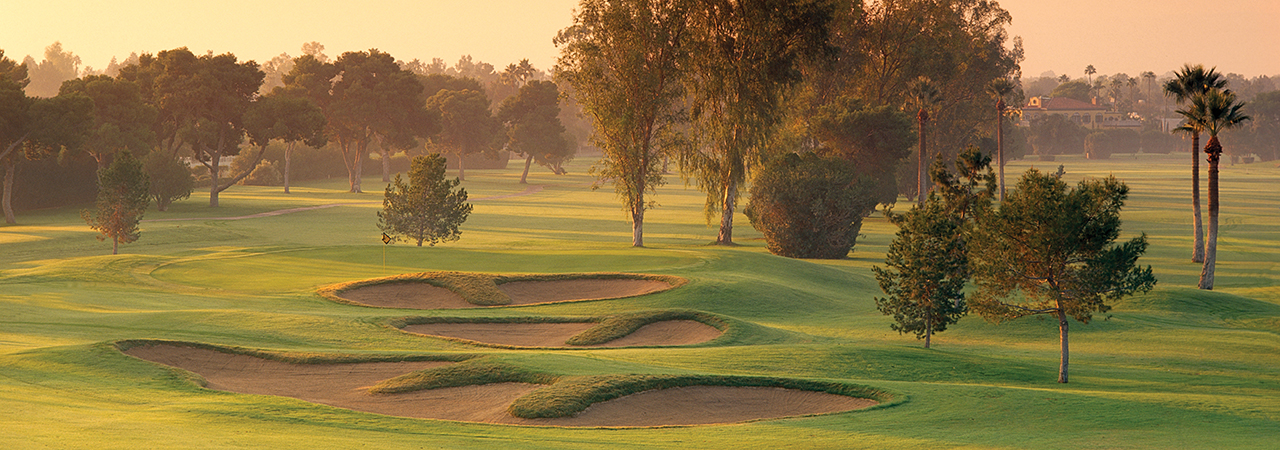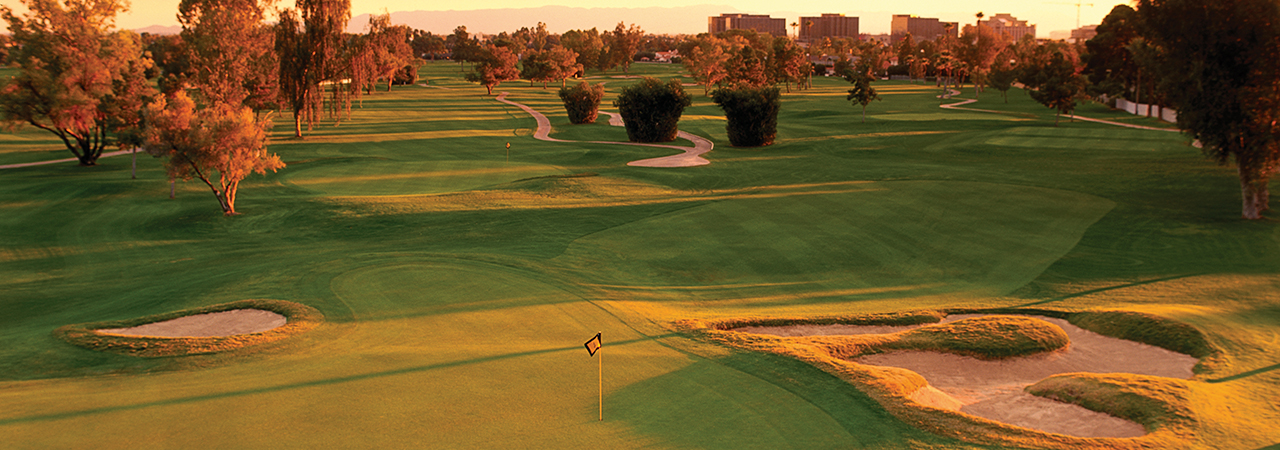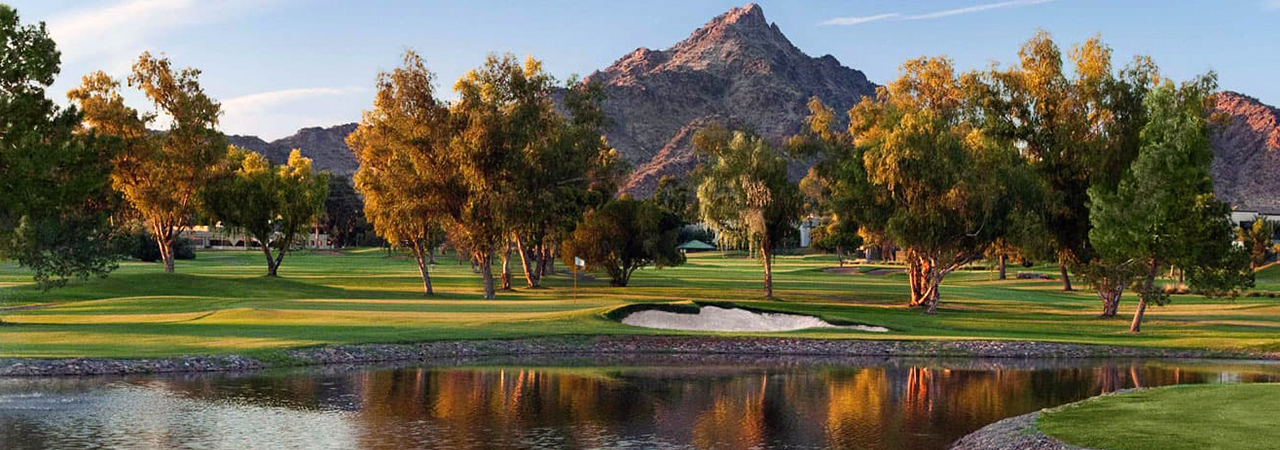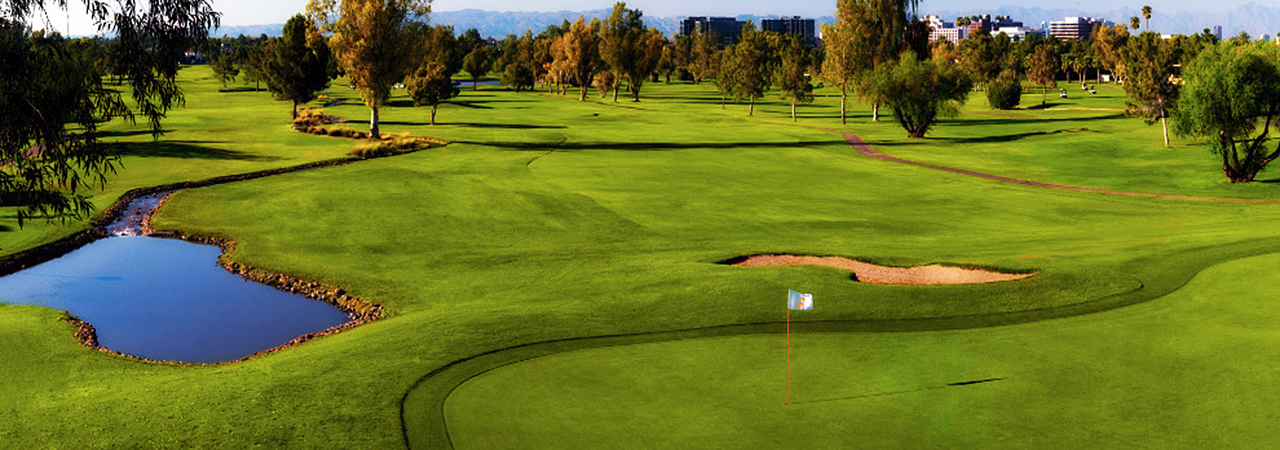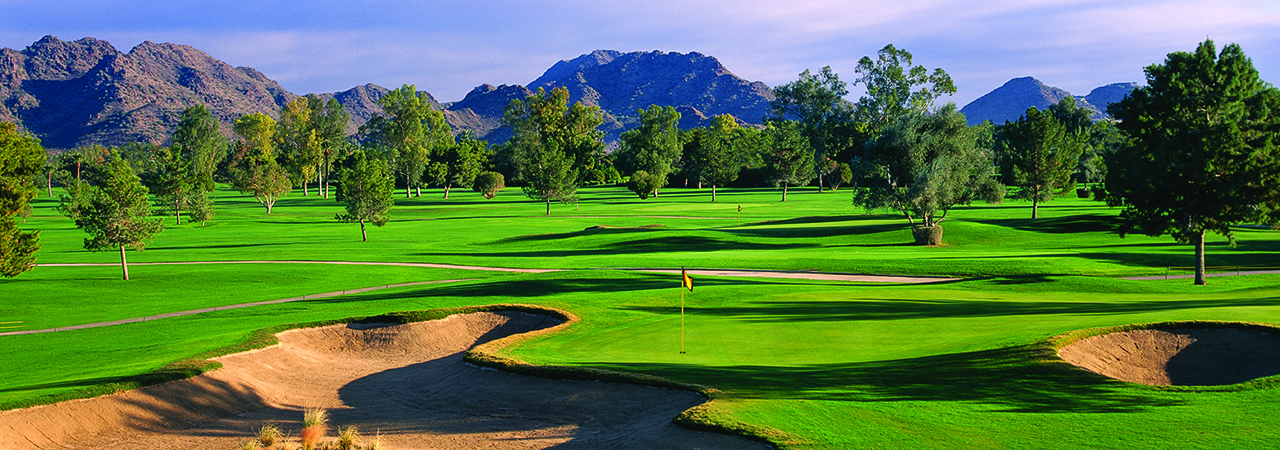Project Description
we were concerned about losing the ambiance…through the efforts
of Forrest Richardson we were able to create a seamless transition
between old and new
shaped strategic bunkering designed to make golfers think
their way about the course
Project Overview
The Adobe Course was originally built in 1928 to a design of William P. “Billy” Bell. Known for his wild and free formed bunkers, Bell had been working with George C. Thomas on several California Designs before coming to Phoenix to create the course at the Arizona Biltmore Resort. The bunkers, often called “Bell Bunkers,” defined the work of both architects during the 1920s.
The Adobe Course serves as the “Central Park” of The Arizona Biltmore Resort and its grand architecture inspired by Frank Lloyd Wright. William Wrigley of Chicago persuaded Bell to bring golf to the grounds in 1926. The Wrigley’s had established their winter home at the Biltmore on top of a hill overlooking the Phoenix Valley. The development of a golf course was a logical move to complement the modern resort taking shape on the sloping desert north of Phoenix’s growing downtown.
Having endured the Great Depression, WWII, and the rough economic times of the 1980s, the Adobe Course had fallen into disrepair and had lost its strategic value. What had once been exciting holes with wicked “Bell” bunkering had become mostly lame holes lined with a dense canopy of way too many trees. There were no fairway bunkers left as of the late 1970s and most of the greens had shrunk to nothing more than small round table tops.
A land use dispute erupted in the 1990s. The primary argument was whether the course could legally be developed into single family homes — essentially destroying the course in its entirety. The final solution, arrived at after more than a decade of hearings and meetings, was a plan to save the golf course, and at the same time restore its grandeur and legacy. Forrest Richardson was a key to this plan, working with stakeholders to re-route portions of the course and range to facilitate a small area for the development of luxury golf condominiums. The historic “Golden Age” course was preserved and, at the same time, brought back to life through a combination of restoration and reconfiguration.
Forrest Richardson’s work at The Biltmore began with an overall master plan. The first phases of construction were remodeling of holes to allow for development and a relocated practice facility. At the conclusion of legal issues, he went to work implementing the plan on the historic Adobe Course, restoring many of Bell’s famous bunkers and bringing back the classic style of the course that had been lost to time.
Quick Facts
Scope: Master Planning, Entitlement Process, Design, Approvals, Bidding, Construction Documents, Construction Management Services, Branding & Signage
Course: 18-holes/Par-71/6,500-yards, Short Game Area, Range
Budget: $6.2 million USD
Completion: Restoration Completed 2005
Address: 2400 East Missouri Avenue, Phoenix, Arizona 85016
Articles
Adobe Course Finally Gets Attention (8-12-03)
A History of the Bells (PDF)

